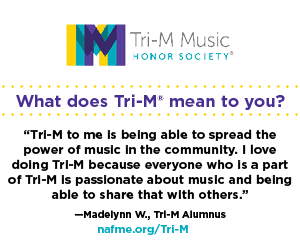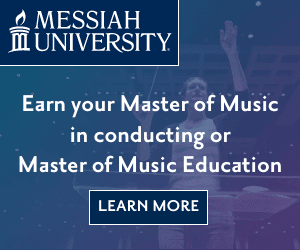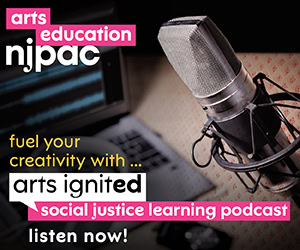/ News Posts / Creating a Middle School General Music Curriculum from Scratch
Creating a Middle School General Music Curriculum from Scratch
By Toni Garza, sponsored by QuaverEd
Join NAfME today
How do we instill a lifelong respect for music in our middle school music students?
When asked to create a Middle School General Music (MSGM) course for their students, most teachers ask two questions: Why do I need to add another course to my already jam-packed schedule? And what am I supposed to do with middle schoolers in general music? These questions are valid and deserving of discussion, but let’s also look at ways MSGM can be of help rather than a hardship.
What Is Middle School General Music?
Perhaps the most exciting and daunting aspect of MSGM is that there is no standard curriculum. Obviously, there are the national standards to which we may adhere, but the content and activities are up to the teacher. This challenges us as educators to find fresh, innovative ways to teach music, and the possibilities are truly endless.
In my experience, MSGM gave me the time I didn’t have in my ensembles to dig deeper into musical concepts with which my students needed more time and practice. A common misconception is that MSGM needs to include a piano lab or iPad stations. While those resources can be valuable assets, I assure you they are not necessary to have a meaningful musical experience.
Why Is General Music Important in Middle School?
Middle School General Music offers a unique opportunity for educators to stretch their own creativity in planning and instruction. Since MSGM is not a performance-based class, it gives teachers an entirely new group of students to influence. Think of it as educating the next generation of music consumers.
Let’s take a closer look at how MSGM brings benefits to teachers and students alike:
- In MSGM, we have the ability to empower students who may not want to perform but are interested in other aspects of music. This could lead to conversations about musical styles and allow students the opportunity to voice their opinions. In addition, students may share their musical preferences with one another and develop an appreciation for the differences and diversity amongst themselves. This is developmentally appropriate for middle school-aged students who are in the process of discovering their own interests and identity. So MSGM gives teachers the opportunity to reach new students, using a tool that everyone understands and appreciates: music!
- MSGM expands and exposes a larger group of students to music they may otherwise never hear and can also open up fresh, new opportunities that can lead to the discovery of other career paths within the music industry. This is an opportunity to inspire a generation of new music consumers who demand a higher caliber of music on the radio and more importantly, instill a lifelong respect for music in all of our students.
How Do I Set Up My Curriculum?
In my experience, project-based learning has been the most effective curriculum strategy in MSGM. It requires a lot of hands-off teaching which can be difficult for those of us who are accustomed to conducting a rehearsal. However, presenting your students with tasks and giving them the freedom to define their learning style to achieve a goal can be very empowering. The creativity that emerges from these projects also far exceeds an ensemble rehearsal by giving students a safe space to try new things and be responsible for their own learning.
Does the thought of leaving middle school students alone to be responsible for their own learning sound scary? It is. I was very frightened the first time I implemented a project-based lesson into my classroom. However, I was shocked to find that when I set the parameters and gave my students clearly defined deliverables with specific due dates, they followed through.
How Do I Create an Engaging Project-Based Lesson?
As the teacher, you know your students best and can decide what project topics will be of most interest. For example, I noticed many of my students resisted listening to various types of music, insisting that any styles other than pop, hip hop, and rock music were “boring.” I wanted to expose them to a variety of styles but knew that genuine interest was necessary to leave a lasting impression, so I asked them an essential question: Which style of music is the most influential? This not only required them to learn about various genres but also to define the term influential and defend their opinion. I gave them project goals such as:
- Learn about at least 5 different styles of music.
- Define the characteristics of influential music.
- From the styles researched, select one style of music that you feel is the most influential.
- Research at least 3 examples of artists and/or composers from your chosen style.
- Present your style and opinion of what makes it the most influential to an audience.
There were several other goals and due dates associated with this project. Each group had a checklist to ensure that they were meeting their project deadlines, and they were responsible for completing and submitting each task.
As a class, we also created a rubric defining how each group would be graded. I set the criteria on which they would be graded, but they were responsible for determining what each level entailed. For example, one category for grading was teamwork. The rubric listed several columns and proficiency levels that each group could achieve: Exemplary, Proficient, Emerging, and Needs Improvement. The students were responsible for defining each level, which gave them a voice in the evaluation process. The class was also able to discuss examples of each proficiency level to help them better plan their own project. When it came time to grade their project, I referred back to their own words and examples, giving them a sense of empowerment, ownership, and accountability.
Now that we have the background, let’s create the template. Remember that the beauty of MSGM lies in its flexibility, so please feel free to expand upon these ideas in your own classrooms. Always keep in mind this essential question: How do we instill a lifelong respect for music in our middle school music students?
Download the Creating Middle School Music Curriculum worksheet
About the author:
 Toni Garza graduated from Berklee College of Music with a Bachelor’s Degree in Music Education. She completed her MBA in Music Business from Southern New Hampshire University. Toni began her teaching career in the Boston Public Schools as a middle school choral and general music teacher and went on to teach elementary music and 4th-grade general education, eventually becoming an elementary music coach in the Metro Nashville Public Schools. Toni currently serves as an Instructional Coach and Clinician for QuaverEd.
Toni Garza graduated from Berklee College of Music with a Bachelor’s Degree in Music Education. She completed her MBA in Music Business from Southern New Hampshire University. Toni began her teaching career in the Boston Public Schools as a middle school choral and general music teacher and went on to teach elementary music and 4th-grade general education, eventually becoming an elementary music coach in the Metro Nashville Public Schools. Toni currently serves as an Instructional Coach and Clinician for QuaverEd.
Did this blog spur new ideas for your music program? Share them on Amplify! Interested in reprinting this article? Please review the reprint guidelines.
The National Association for Music Education (NAfME) provides a number of forums for the sharing of information and opinion, including blogs and postings on our website, articles and columns in our magazines and journals, and postings to our Amplify member portal. Unless specifically noted, the views expressed in these media do not necessarily represent the policy or views of the Association, its officers, or its employees.
March 3, 2020. © National Association for Music Education (NAfME.org)
Published Date
March 3, 2020
Category
- Standards
Copyright
March 3, 2020. © National Association for Music Education (NAfME.org)







